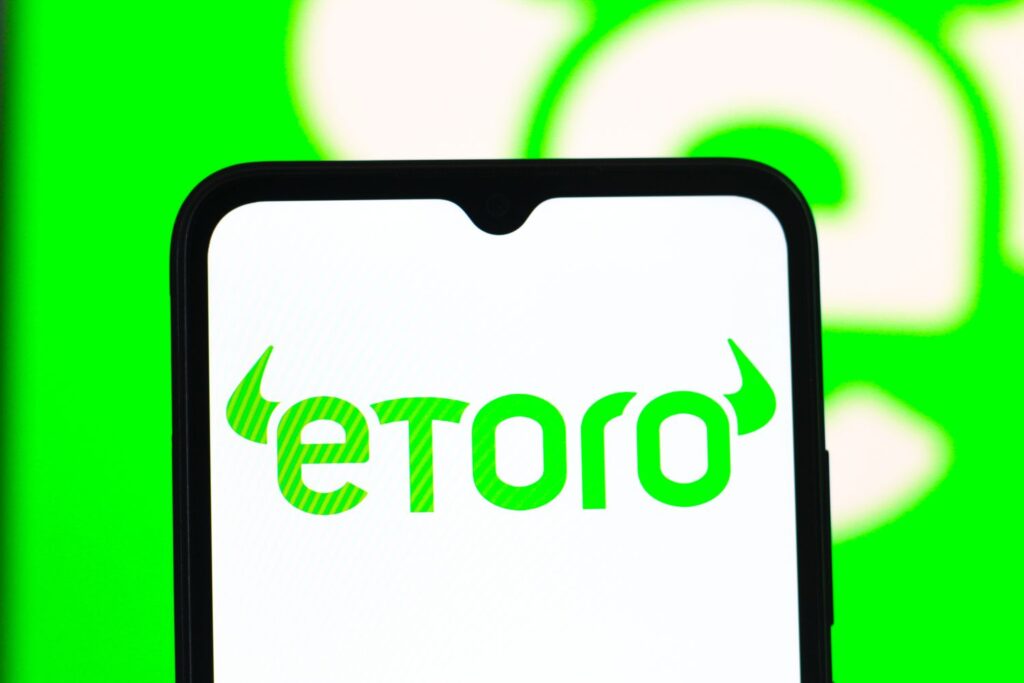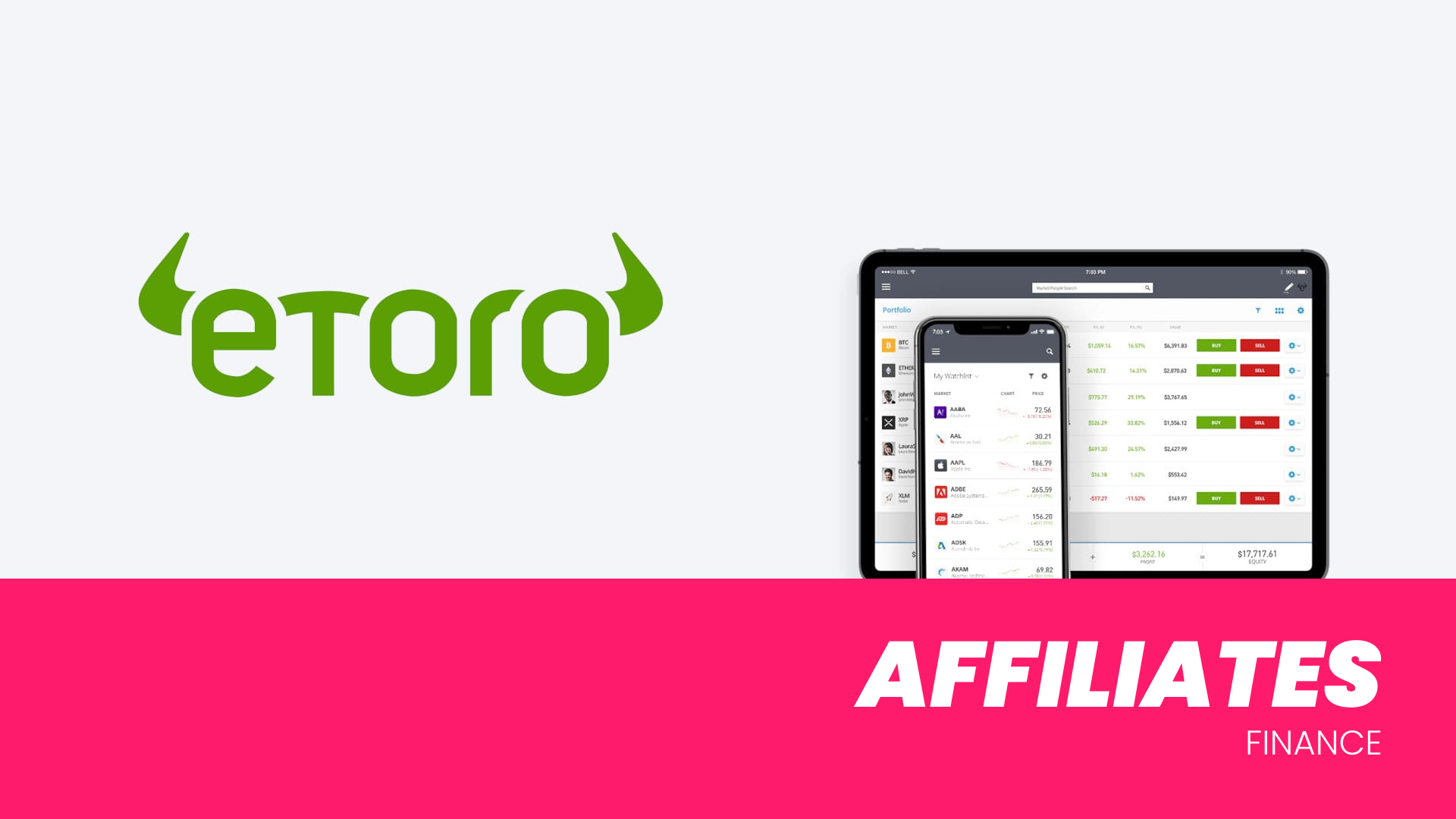There’s an interesting tension in affiliate finance right now: the explosive growth of fintech and crypto platforms has flooded the space with partnership offers—yet only a few programs deliver real, long-term value. The eToro Affiliate Program stands out not because it shouts the loudest, but because it quietly rewards precision, compliance, and strategic content positioning. Still, for serious affiliate marketers, the question remains: is the eToro affiliate program really worth promoting in 2025, and under what conditions does it perform best?
Let’s unpack this with clarity and depth—without fluff, without surface-level claims, and with full focus on what seasoned affiliate marketers genuinely need to know.
Quick Details at a Glance
| Feature | Detail |
|---|---|
| Program Name | eToro Partners |
| Commission Models | CPA (up to $250), RevShare (up to 25%), 10% sub-affiliate commissions |
| Cookie Duration | 60 days |
| Minimum Payout | $100 (e-wallets), $500 (bank transfer) |
| Payout Methods | PayPal, Skrill, Neteller, WebMoney, Bank Transfer |
| Allowed Channels | Blog, SEO, Social Media (disclosed), YouTube, PPC (non-brand) |
| Disallowed Niches | Gambling, Get-Rich-Quick, Telegram/WhatsApp groups |
| Tools Provided | CAKE tracking, widgets, banners, affiliate manager |
| Minimum Deposit (CPA) | $1–$10,000 (varies by region) |
| Affiliate Approval | Manual verification + traffic source approval |
What Is the eToro Affiliate Program and Who Is It For?
The eToro Affiliate Program, branded as eToro Partners, is a performance-based marketing platform that allows individuals to earn from referring new users to eToro’s multi-asset brokerage platform. This program is intended for affiliates with a financial or trading-related audience, particularly those who can generate verified account signups in compliance-heavy regions.
Unlike open affiliate programs with broad, indiscriminate targeting, eToro restricts entry to content creators, educators, and marketers who can demonstrate traffic legitimacy and regulatory compliance. If your funnel relies on private messaging groups, off-the-grid promotional tactics, or thin traffic with questionable geo quality, the door will not open.
Furthermore, the partner fit isn’t just about your promotional channel—it’s about how you align your messaging with the user journey. For example, affiliates who educate users on trading strategies or investment psychology tend to perform better than those who simply list bonus offers or platform specs.
How Does eToro’s Commission Structure Actually Work?

eToro’s affiliate commission model is hybrid, offering both CPA (Cost Per Acquisition) and RevShare-based earnings. However, the CPA model is the centerpiece, with rewards scaling up to $250 per qualified trader. But the word “qualified” here carries real operational weight.
To earn a commission:
- The referred user must successfully verify their account, pass KYC/AML checks, and make a minimum deposit.
- This deposit threshold varies widely by country:
- USA: $1
- UK: $10
- Israel: $10,000
- Tier 1 (most EU): $100+
- Bank transfers (any region): $500 minimum
So, while a $250 CPA might appear appealing on the surface, the actual lead-to-conversion rate is highly dependent on geography and payment method. Affiliates targeting Tier 1 countries with low-friction payment methods (e.g., PayPal or credit card) have significantly better conversion rates.
The RevShare model offers up to 25% of net trading revenue, which is generally more profitable over the long term but slower to mature. In practice, RevShare is better suited for content brands with loyal, returning audiences who actively trade over time.
An additional benefit often overlooked is the 10% commission from sub-affiliates, which can compound significantly for those managing networks or affiliate education hubs.
How Are Payouts Structured and What Are the Minimum Thresholds?
eToro enforces strict payout criteria, which must be understood before onboarding. Payouts are made monthly on a Net-30 basis, meaning your commissions earned in April will be paid at the end of May.
Minimum payout thresholds depend on the withdrawal method:
- $100 for Skrill, Neteller, WebMoney, PayPal
- $500 for traditional bank transfers
This structure naturally favors affiliates who operate in lower-cost geographies or who receive multiple conversions per month. Affiliates bringing in one or two leads monthly from Tier 3 countries may struggle to reach thresholds consistently, especially if their referrals deposit via bank transfers.
Additionally, inactive affiliate accounts are set to commission-free mode. You must reactivate manually to begin earning again—a detail that penalizes sporadic campaigns or seasonal traffic.
How Effective Is eToro’s Tracking and Attribution System?
The program relies on CAKE tracking software, a widely used affiliate platform with solid reputation for real-time performance metrics, reliable attribution, and flexible reporting. Cookie duration is set to 60 days, which is fair but not industry-leading.
Where many novice affiliates go wrong is in misunderstanding attribution logic. eToro’s system credits the last eligible affiliate link the user clicked before converting. So even if a user visited your content first, but clicked another affiliate’s link within the cookie window and signed up, the other affiliate will get the credit.
CAKE’s tracking tags are customizable and offer transparency in lead behavior, but they require precise implementation. UTM parameters, click IDs, and postback integrations must be handled carefully if you’re running PPC or building in-house dashboards.
What Traffic Sources Are Allowed and Which Ones Are Banned?
One of the most critical aspects of the eToro affiliate program is its strict compliance with traffic source regulations. Affiliates must pre-approve all URLs and promotional channels before launch. Failure to do so results in commission forfeiture or account deactivation.
Here’s what is explicitly allowed:
- SEO-driven blog articles
- Long-form YouTube content (with full risk disclosures)
- Social media (Facebook, Instagram, X) – only with disclosed, approved accounts
- Paid ads on non-brand keywords (Google Ads, Bing, native platforms)
- Content partnerships with compliant third-party sites
Here’s what is explicitly banned:
- Telegram or WhatsApp groups
- “Get-rich-quick” narratives
- Unapproved custom landing pages
- Brand-bidding in PPC
- Promotions omitting risk disclaimers or violating local ad laws
eToro takes compliance seriously—even seemingly harmless copy or visual elements must be approved before going live. This rigid structure often filters out low-effort affiliates but allows those who invest in scalable, compliant funnels to win long-term.
What Makes eToro Different From Other Affiliate Programs?
The eToro affiliate program distinguishes itself not by gimmicks, but by structural depth and regulatory maturity. While other trading platforms may promise higher CPAs or faster payouts, they often underdeliver on approval speed, user trust, or retention tools.
What sets eToro apart:
- Localized funnel conversion: Regional landing pages match language, regulation, and product availability. This improves both compliance and conversion rate.
- Social trading hook: Features like CopyTrader and CopyPortfolios drive engagement among retail traders, increasing average account lifespan.
- Support infrastructure: Access to real affiliate managers who assist with campaign optimization and compliance navigation is a rarity—and one eToro delivers.
That said, this program is not a “quick win” for beginners. It rewards those who build methodically: affiliates with targeted geographies, deep content alignment, and the patience to test multiple traffic angles.
Who Should Promote eToro—and Who Should Avoid It?
Affiliates who should promote eToro:
- Those with Tier 1 traffic in finance, crypto, or investment education
- Blog owners with SEO authority in high-intent search categories
- Video creators focused on trading walkthroughs or platform tutorials
- Publishers compliant with EU/UK/US financial advertising laws
- Funnel builders who can A/B test localized landers and optimize deposit conversion
Affiliates who should avoid eToro:
- Arbitrage marketers relying on brand bidding or cloaked pages
- Telegram-based communities or anonymous lead generators
- One-time offer sites or giveaway funnels
- Beginners without content authority or geo-qualified traffic
The key takeaway is this: you don’t join eToro to experiment—you join to scale. But you must first understand its operational layers, compliance boundaries, and performance curve.
Final Thoughts: Is eToro Worth Promoting?
Yes, the eToro affiliate program is worth promoting, but only under the right conditions and with a proper understanding of its structured ecosystem. It is not a plug-and-play opportunity, and it does not reward shortcuts.
You must be prepared to:
- Build around approved content angles
- Respect regional compliance nuances
- Track conversions accurately
- Prioritize Tier 1 audience segments
- Communicate clearly with account managers
If you meet these criteria, eToro can deliver predictable, long-term earnings through its hybrid commission model and brand trust. For high-quality finance affiliates, it remains one of the most operationally sound and transparently run programs in the space.

